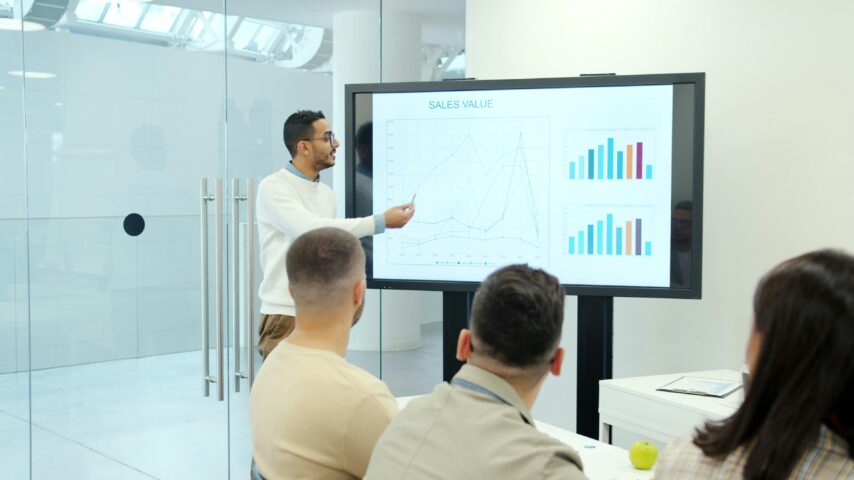In the fast-paced world of hospitality, seeing up-to-date sales numbers is the difference between a good day and a bad one. Having real-time insight into your daily sales trends isn’t just “nice to have” – it’s essential for making timely decisions that boost revenue and improve guest experiences.
But with so many tools and methods available, what’s the best way to track daily sales trends in real time?
Let’s break it down.
1. Why Real-Time Sales Tracking Matters in Hospitality
Hospitality businesses operate in a dynamic environment — weather, events, and even social media can impact your sales on any given day.
Tracking sales in real time helps you:
- Spot and respond to trends immediately. Is your average transaction value dropping below your target? Could you be upselling an item to boost your sales?
- Manage inventory proactively to reduce waste and shortages. Get your team to push for items in high supply to avoid waste and shortages.
- Adjust pricing or promotions while the opportunity is still hot. Maybe even applying dynamic pricing to generate the best margins without alienating customers.
- Monitor team performance and reward high achievers. Create a bonus competition, with the employee with the most sales getting the bonus and provide additional training to those performing below average.
When decisions are based on yesterday’s numbers, you’re already too late. Operators need to be proactive and make changes instantly to add tothe bottom line before it’s too late. In a margin-tight industry, every penny counts.
2. Use a Cloud-Based POS System
Your Point-of-Sale (POS) system is the heart of real-time sales tracking. A cloud-based POS provides instant access to sales data from any location, enabling faster and more informed decision-making. Unlike traditional POS systems, which store data locally, a cloud-based POS stores all information securely in the cloud. This means owners and managers can monitor operations remotely, automatically update pricing or menus across multiple locations, and integrate easily with other business tools.
Look for POS features such as:
- Live sales dashboards accessible from anywhere.
- Category and product-level breakdowns to see what’s selling best.
- Mobile app access so managers can check numbers on the go.
Or use Tenzo for all your real-time needs thanks to integrations with over 80 different platforms, a native mobile app and all your sales metrics at your fingertips.
3. Leverage Aggregation Dashboards
While POS data is useful and a great starting point, connecting your sales to the rest of your operational tools with custom reporting can take insights to the next level. In order to connect your POS to the rest of your tech, it’s key to have a POS with an open API that allows third parties to build integrations enabling the process to be sped significantly.
Benefits of aggregated dashboards:
- Get the bigger picture – understand how your real-time sales look vs your labour, inventory, reviews and reservations. E.g is the cost of your labour as a % of sales above 30%?
- Build visual dashboards that highlight trends and anomalies; e.g. are there sites out-performing sales targets and what learnings could other sites implement.
- Set up real-time alerts for sales spikes or dips, set thresholds on key metrics and get notified instantly so you can act before it’s too late. E.g is spend per head below £15?
Sales are the driving force of your business, but it’s important to remember the cost behind your sales to get a better understanding of your performance. Getting the right tool to aggregate your data and generate automated reports gives you the visibility into what’s going well and what could be optimised.
4. Get your real-time sales to the right people
It’s one thing to have elaborate reports with real-time sales data. But it’s another to get the right people, from General Mangers to Head Office, analysing these reports and in turn making data-backed decisions to improve performance.
So how exactly do we empower our teams to track daily sales trends?
- Custom dashboards based on role: you want your team laser-focused on what’s relevant for them and not be overwhelmed with lots of data that does not bring them value. A general manager will want a snapshot view of sales, while the Head Office will want the ability to deep dive into data.
- Automated email reports: get reports to go out on a regular basis, so your team knows when to expect them. Get ahead of weekly meetings and embed your sales reports in your operational processes.
- Monitor real-time sales on mobile: managers aren’t always sitting in an office — they’re on the floor, interacting with guests and staff. That’s why mobile access to real-time sales data is key.
Make your sales reports tailored, accessible and reliable to ensure your team is tracking the right sales data and using it to improve performance.
6. Combine Sales Data with Operational Insights
Sales numbers alone don’t tell the full story. The real magic happens when you connect sales data to contextual information that software will simply not capture without the input of your team.
What contextual information to include:
- Road works or transport disruption that could have contributed to lower sales.
- Were there staff issues that impacted service?
- Did site promotions upsell certain items?
An end of day log by general managers summarises the day’s trading can be a quick and routine habit that will provide the ‘why’ behind the sales.
Final Thoughts
The best way to track daily sales trends in real time in hospitality is to combine a cloud-based POS system, mobile-friendly dashboards, and automated reporting — then layer in more data sources for deeper insights.
When you can see what’s happening as it happens, you can act quickly, optimise operations, and ultimately deliver a better guest experience.If you want to achieve what we have mentioned above, reach out to [email protected] to see how Tenzo will supercharge your performance.




